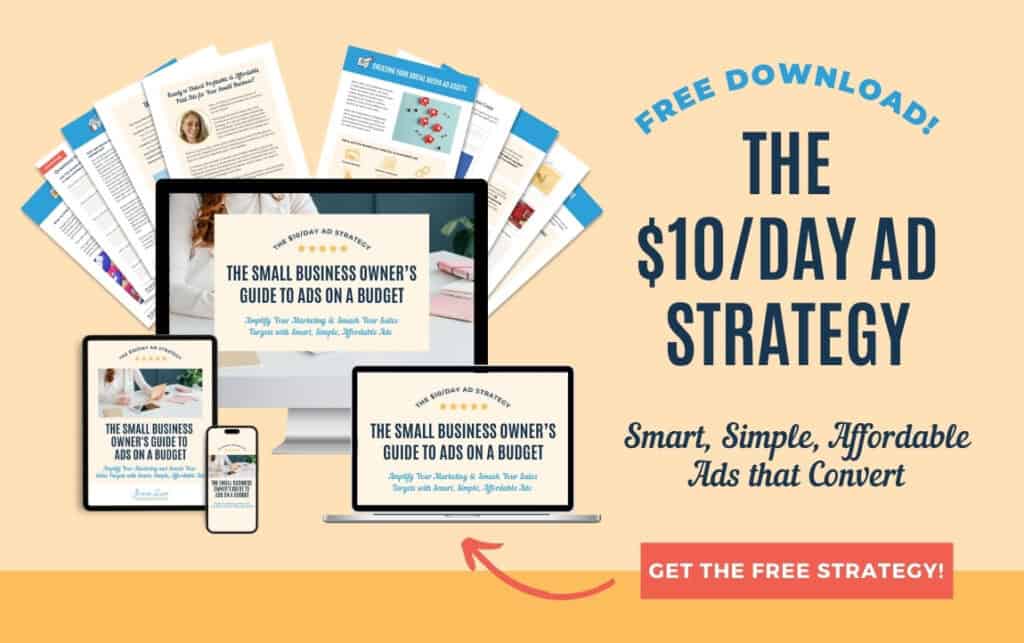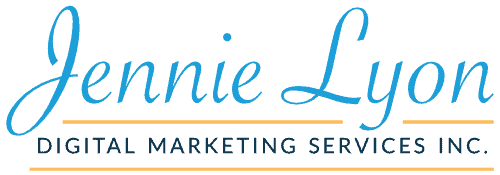How To Complete A Social Media Audit
Are you on social media? Of course you are! Who isn’t! Do you remember your very first exposure to social media? Oh my gosh, for me it was Classmates.com! Haha. But for many of you, it may have been MySpace! Do you remember what it felt like to, for the very first time, have unlimited reach? You could make friends and connect with anyone in the entire world. Communication was the way of the future. That was the promise of social media in the late 90s.
But no one could have predicted what it would become in the 2010s! Facebook, Twitter, Tumblr, Pinterest… Today, dozens of different social media services exist out there, each offering a unique spin on connecting with others.
As a small business owner and social media marketing expert, I’ve been watching the progression of social media closely over the last few decades. That’s how I know one of the best ways to connect with your customers is to have a robust presence on social media! So, when was the last time you took a good long look at your social media presence?
Why You Need Social Media
Social media is a crucial part of every digital marketing strategy.
Being on social media is how you reach out to previous, current and potential clients—keeping them in the loop about any developments with your business. It’s how you share free valuable content and inspire them. And don’t forget about some hot promo for your products and services! Social media isn’t optional anymore; it’s a necessary part of owning a small business.
Why Do an Audit?
Last week, I did an entire episode of Digital Marketing Made Simple focused on doing a website audit. No matter how much time, effort, and money you put into building a website, it still needs regular maintenance, just like your car! Eventually, you will want to do an audit to make sure that everything looks modern, is secure for your visitors, and offers valuable content that will lead them to your service offerings.
It’s the same situation when it comes to social media audits. You want to get a clearer picture of your current social media efforts. This overview will allow you to spot the places where you can improve your results and engagement, figure out what’s working and what isn’t. Is your content resonating with your audience? Have you been getting new followers lately, or have things come to a standstill?
Another reason you want to do regular social media audits is that each platform can change its look and functionality. For example, Facebook just did a massive redesign (as they periodically do every few years). Because of this, both personal and business profiles look completely different than they did only a few weeks ago. There is a chance that your previously chosen profile and banner images just don’t look right with the new layout.
What Networks Should You Be On?
For right now, let’s stick with the big four: Facebook, Instagram, LinkedIn, and Pinterest.
Facebook is the “default” social media channel in most people’s minds. Everyone is on Facebook, whether they want to be or not. It’s an indispensable platform for reaching directly out to your audience and interacting with them across chat and comments. Whether you are using Facebook ads, boosted posts, or simply your regularly posted content, Facebook is where it’s at for digital marketing.
Some people call Instagram the new Facebook, and that’s true in many ways! First, Facebook OWNS Instagram, so there’s that. But also, Instagram harkens back to the days when Facebook was just about sharing photos. There’s not a whole lot of political or controversial content on Instagram. Instead, it’s a social media channel where you can feel good about scrolling to see what your friends are up to. On top of all this, there are now other popular social media tools like Instagram Stories, which allow you to create short video content for your followers. In other words, Instagram is on the rise!
LinkedIn is another platform that you can’t afford to avoid. Chances are that you it for business networking reasons, but it’s also a fabulous platform to share your content. Unlike the casual audiences offered on Facebook, Instagram, or Twitter, you’re dealing with a more professional crowd here, many of whom you already know in real life.
And finally, Pinterest! I feel like Pinterest is the one social media platform that many people forget! If you have content, you need to be on Pinterest! With over 250 million users and 90% of them looking to make purchasing decisions, Pinterest is a marketing tactic you don’t want to skip!

The Basics
The first step of a social media audit is to take a look at the surface level. Basically, you want to know what followers will see when they visit your various social media profiles. To get started, make sure you have all of your account login information handy and get ready for a deep dive!
First, you want to record all of the relevant information from your accounts. For example, how many followers do you have? How many likes? How many posts and comments? What are your records on the platform? What groups do you belong to or pages you follow?
You also need to make sure that your branding is constant across all platforms. Take your cover images, for instance. You should have the same profile pic on each of your accounts to build brand recognition. It could be your logo or a fantastic photo of you (not a selfie). If there is a banner section of the profile, make sure you use the same one on every platform too. And it almost goes without saying that all of these images should be high-quality and everything is the correct size.
Keywords, Hashtags and Images, Oh My!
Another branding consideration you need to make are the keywords, hashtags, and images you use to get your content out there and connect with your audience. All of these contribute to your brand voice, which should be consistent across every platform.
Be sure that your accounts are all verified and in good standing. If you’re a person of public interest, you might want to get a blue checkmark put next to your name to confirm that you are who you say you are!
Finally, make sure that all of the links on your profile are up-to-date. The last thing you want is someone clicking on a link in your profile, only to get a 404.
Evaluate Your Channel’s Performance
Once you’ve done a surface level inspection of your social media profiles, it’s time to get into the technical side. Don’t worry, it’s not TOO technical!
The very first thing you want to do is identify your best posts on each platform. Which three had the best engagement? Be sure to write these down. You can find this information using the built-in analytics/insights tools for each platform. Choose a key metric here that makes sense for your brand, then measure for that, looking for patterns in all of your posts. Do your posts with videos do better? Is your audience text-driven? You need to figure out what is resonating with your audience.
And once you do, it’s time to do more of it! Content creation is the strong backbone of a social media strategy, so blogs, webinars, online courses, and more will give you many reasons to post daily and give your followers a ton of free and valuable content! What kind of social media ads actually get clicks (because you want to double down on those)!
Once you’ve figured out the kind of content your audience is craving, it’s your job to provide it to them. This can be a tremendously time-consuming task, as you will need to be writing daily posts that contain valuable content, not just empty words. A great way to keep on track is to use a social media calendar, where you write down all of your posts ahead of time. To get you started, I have a free Social Media Calendar: Template you can check out!

You can’t do this just once, though. You need to be tracking your results over time. Check your social media analytics at least once a month, preferably more, to see where the engagement is going. By doing so, you will be gaining valuable information about your audience that will help you tailor your content to them going forward.
Are You Using the Right Platforms for Your Brand?
There might be a chance that one or more of your social media channels simply aren’t working for your brand. If that’s the case, you might want to consider putting the focus on the platforms where your audience is hanging out. This isn’t to say that you should abandon the lesser-used platforms, but they aren’t where you should put your energy (at least not for now).
Speaking of where your audience is hanging out, you want to be in the same places! If there are any popular groups filled with your ideal customers, you should become a member! Not just that, you should also engage with them through comments and posts. If you have some Facebook or other social media experience in your personal life, this should feel familiar!
The point of all this work is to determine your return-on-investment. I’m not necessarily talking about dollars and cents here, but the amount of time and effort you put into each social media platform. As a small business owner, you know there are never enough hours in the day. Investing your time into social media that isn’t working is simply a waste.
But what’s not a waste is spending time figuring out why things aren’t working and how they can get better. That’s the entire reason why you’re doing this social media audit!
Boost Your Bio
After you’ve completed your social media audit, you should have a ton of information about how you can improve your digital outreach and connect with more of your audience.
Rewriting your bio or About section should be high on your list. This copy is going to give your visitors some context about you and what you offer. Depending on its length, it might tell them everything they could ever want to know or just give them a one-sentence brief. Either way, it needs to be carefully crafted for maximum impact.
Your bio will be different depending on which platform you are on. With Twitter, you have a maximum of 160 characters, so you can’t waste a single one. Think of it as a super-quick elevator pitch that introduces you quickly and displays your personality. You should also include your most important keywords in the bio. If you want your followers to check out a website, product, or landing page, include a call-to-action at the end. If you’re feeling a little playful, you could even add some emojis!
With Instagram, you have even less room: only 150 characters. You don’t want to copy your Twitter bio word-for-word, but you want to hit the same points, like showing off your personality and using important keywords. Be sure to include a link in your Instagram bio so you can include it in your Instagram content (That’s why you always see “Link in Bio” in posts).
Facebook Bio
On Facebook, you’re going to have a little more room to breathe. Rather than needing to shove everything into a single sentence, you will have different fields where you can fill in your info. For example, your company’s mission, a short description of your company, relevant accounts, and, of course, your bio! With Facebook, you only get 101 characters for the bio section, but as you can spread the rest of your information across your profile, this shouldn’t be too tricky.
Now, if you REALLY want to get in-depth with your bio, LinkedIn is the place to do it! While you should put in a single sentence description just below your profile pic (look to your other short bios for some ideas what to put here), you can also fill out the About section. Here, you have as much room as you want to talk about yourself. My advice would be to look at the About page on your website and then adapt it to your LinkedIn profile. This can be a bit tricky, but a professional copywriter can help tighten things up and create a compelling About section that will catch your visitors’ attention!
So, What Did We Learn?
Let’s review what we learned:
- Why we need social media as small business owners.
- Why you should do yearly audits of your social media.
- The social media networks you should be on.
- A look at Facebook, LinkedIn, Instagram, and Twitter.
- The basics of performing a social media audit.
- Digging into your social media profiles’ metrics.
- Figuring out what content genuinely connects with your audience.
- Creating a social media calendar.
- Determining your social media ROI.
- Boost your social media bios by adding keywords and displaying your personality.
Over the years, I’ve worked with countless clients, helping them rebuild their social media presence from the ground up. It all starts with the audit, but that’s not the end of the road. Once you’ve collected all of that information, you need to act on it by writing new profiles, getting new images, developing new content, and generally revamping the way you communicate your brand online.
If you want some help juicing up your social media, I offer several free resources on my website. No idea how to get started writing effective Facebook Ads? Try my free Facebook Ad Writing: Workbook! Need to keep track of when you’re posting your social media? Use my free Social Media Calendar: Template that I mentioned above! And if you want to learn how to make the best use of all your social media, I highly recommend checking out my free Making the Most of Social Media: Workbook!
And if you still don’t have the time to do social media right, let alone perform a social media audit, I’m always here to help! Contact me today for a free consultation, and we can get started putting all of your social media ducks in a row!
Rate, Review, & Subscribe on Apple Podcasts
If you like what you hear on the podcast, please consider rating and reviewing my show! Woo Hoo! Click here, scroll to the bottom, tap to rate with five stars, and select “Write a Review.” I would love to hear what episodes you enjoy the most!
If you haven’t done so already, please subscribe to the podcast. I’ll be adding new content weekly, if you’re not subscribed, there’s a good chance you’ll miss out. Subscribe now!






















